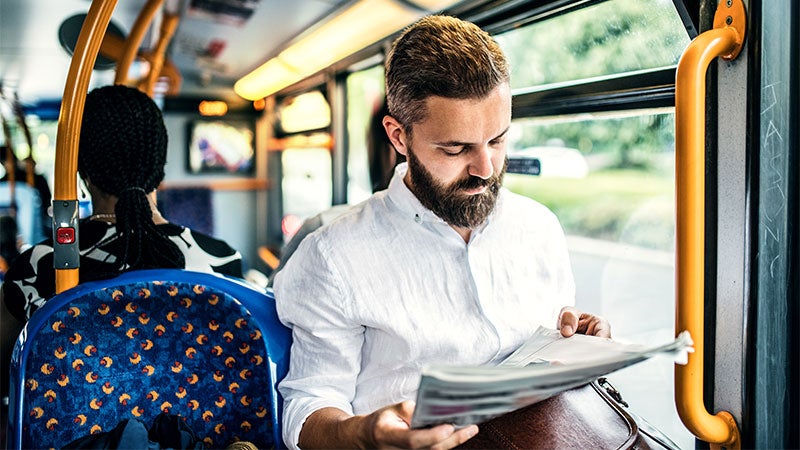Which debt should you pay off first? Five options to consider

The Bankrate promise
At Bankrate we strive to help you make smarter financial decisions. While we adhere to strict , this post may contain references to products from our partners. Here's an explanation for .
Key takeaways
- Paying off debt can help improve your cash flow to achieve other financial goals and improve your overall quality of life.
- When deciding which debts to pay off first, consider its type, interest rate, outstanding balance and impact on your credit score.
- Some strategies to pay off debt effectively include the “highest interest first” strategy, the “smallest debt first” strategy and debt consolidation.
- To choose the right strategy, consider your overall financial situation and long-term goals.
Paying off debt comes with many benefits. These range from freeing up cash flow to achieve other financial goals, like buying a house, to an improved state of mind. But knowing which debt to tackle first can be a challenge.
While you should always make at least the minimum monthly payment on every debt you owe, the best repayment strategy will be based on several factors. These include the types of debt you have, the interest rates you pay and your overall financial goals.
How should you prioritize debt payments?
Prioritizing debt repayment is all about knowledge, meaning you’ll need to take a hard look at your finances to know where to start. List all your debts, along with the minimum monthly payments, outstanding balance and estimated payoff date. Then, ask yourself the following:
- Which of these is impacting my budget the most?
- What would my monthly budget look like if I didn’t have this account anymore?
- Will paying off this debt make more of a difference in my life than paying off these others?
- How much extra can I realistically put toward debt repayment without risking my budget?
- Is there an account small enough that can be paid off quicker than others?
Answering these questions can give you a better grasp on what your debt repayment strategy should be. You can also use a debt paydown calculator to help answer these questions.
What factors should you consider when deciding which debt to pay first?
When deciding which debt to tackle first, factor in the following:
- Delinquent accounts. If you have any debt that’s highly overdue, it’s best to start with that account. Delinquent accounts can have a substantial impact on your credit, just like accounts in collections, so those should be your first priority when paying off debt.
- Type of debt. Some debt, like tax debt, may require more urgent attention than paying off your car loan early. Likewise, paying off an installment loan won’t impact your credit as much as a credit card that’s almost maxed out.
- Interest rate. Some debts, like personal loans, have a fixed interest rate — others, like credit cards, have variable rates. The latter can fluctuate depending on market conditions, making it harder to pay off your debt. Debts with higher interest rates are also more expensive in the long run.
- Outstanding balance. It may be worth it to tackle a debt that’s close to being paid off first, as this will give you momentum to keep going. Also, if you have a revolving debt that’s close to its limit, lowering it first could mean a significant boost to your credit score and a better chance of securing better rates in the future.
Different strategies for paying off multiple debts
Option 1: The “high-interest first” strategy
Paying off high-interest debt first is commonly referred to as the avalanche method. This involves making the minimum monthly payments on all of your credit cards and loans, but putting every extra penny you can toward the card or loan with the highest interest rate.
Focusing on the debt with the highest interest rate first is a smart move since you’re taking care of the costliest debt. However, it isn’t necessarily the best option for everyone. If you have multiple accounts with similar interest rates, for instance, it may not be the best approach. The avalanche method might also be discouraging if you have a large balance since paying it off could feel impossible.
Example
- Credit card one: $500 balance and 20 percent APR
- Credit card two: $1,000 balance and 21 percent APR
- Auto loan: $20,000 balance and 8 percent APR
- Personal loan: $5,000 balance and 12 percent APR
- Student loan: $12,000 balance and 7 percent APR
You’ll make the minimum payments on all your accounts, but apply any extra funds leftover for the month to credit card two since it has the highest interest rate. Once it’s paid off, you’ll continue the same pattern by focusing on credit card one, followed by the personal loan. Repeat this cycle until all the balances are paid in full.
- Key advantages: Allows you to save money in interest.
- Key drawbacks: If your largest debt also has the highest interest rate, it could take a while to pay it down. This may discourage some people, increasing the likelihood of giving up on the strategy.
- Better for: Those looking to minimize the amount of interest they pay.
Option 2: The “smallest debt first” strategy
While some people choose to address their debt based on the interest rate, others pay off their smallest debt first and work their way up to the largest one. This debt repayment method is known as the snowball method because it starts small and grows over time.
The snowball method works because paying off a debt in full incentivizes you to keep working toward your goal. As you pay off your smaller debts, you’ll have more money to put toward your larger debts.
You might end up paying more in interest than you would have paid if you tackled your highest-interest debt first, but the psychological benefits of getting those smaller debts paid off as quickly as possible can be very rewarding.
To get started, list all of your current debts — and their current balances — from low to high. Continue to make the minimum monthly payment on all of your debts while putting as much extra money as possible toward your smallest debt. Once that debt is paid off, put your extra money toward your next-smallest debt, and so on.
Example
- Key advantages: Helps build motivation and encourages you to stick with the plan.
- Key drawbacks: It may take longer to become debt-free, and you could pay more in interest than with other methods.
- Better for: People who struggle to stay motivated about paying off debt.
Option 3: Paying the debts that most affect your credit score
Your credit score can help lenders understand how you manage your finances. It is predominantly affected by how much debt you have, the number of open credit lines in use and your payment history.
Your credit utilization ratio — the amount of your credit limit on revolving accounts compared to what you’re using — should be under 30 percent, and your accounts should be current. Any payment delinquency will make lenders reconsider whether to offer you a loan.
If you have a polished credit score, financial institutions will likely consider you less risky as a borrower. Focusing on your credit score could require lifestyle changes to start chipping away at debt.
Changing your habits may be a huge hurdle, and you may need to cut back on smaller expenses to prioritize debt payment. Since a chunk of your earnings will go toward your debts, you could lose motivation. However, giving up some comforts can decrease your debt and improve your credit score.
Example
- Credit card one: $750 ($1,000 credit limit, 75% credit utilization)
- Credit card two: $1,500 ($3,000 credit limit, 50% credit utilization)
- Credit card three: $250 ($2,500 credit limit, 10% credit utilization)
- Auto loan: $25,000
- Student loan: $15,500
Since your credit utilization significantly impacts your credit score, pay down credit cards with high utilization rates — both the overall credit utilization and credit utilization by card are factored in. Start by focusing on those with utilization rates over 30 percent. Reducing the utilization of these two will give you the best chance at improving your credit score alongside paying your other bills on time.
- Key advantages: You’ll have more opportunities to qualify for lower APRs and receive increases in spending limits to meet future financing needs.
- Key drawbacks: Focusing on your credit score may also require lifestyle changes, making it easier to lose motivation.
- Better for: People looking to finance a large purchase, such as a house or a car.
Option 4: Use a balanced method
Attacking your largest debt may feel like too large of a financial feat. Smaller debts can wait compared to more pressing circumstances, like debts that have fallen into collections. Debts that get you tax deductions for the interest you pay — like a student loan or a home equity loan used to \buy, build or substantially improve your home — might also fall lower in the order of importance.
Taking a balanced approach that’s exclusively your own may be best in these scenarios. You can incorporate any of the three debt repayment options in whichever order you desire. For instance, you could eliminate a debt that’s in collections before paying your credit card down, making only minimum payments on your other accounts in the meantime.
Example
- Key advantages: You can make your debt repayment plan your own. If you have an emergency, you could manage the expense without sacrificing your goal of getting out of debt.
- Key drawbacks: Without a clear strategy, you could lose motivation.
- Better for: People who need more flexibility but can stay disciplined.
Option 5: Consolidate your debt
You have a few options if you want to consolidate your debt into a single monthly payment. You could transfer your existing credit card balances onto a balance transfer credit card. The top balance transfer credit cards offer a 0 percent promotional APR for between 15 and 21 months on balance transfers, giving you ample time to start paying off your debt without paying interest on your transferred balance.
You could also take out a low-rate debt consolidation loan and use that money to pay off high-interest debt. If you can find a loan with considerably lower interest rates than what you’re currently paying, you can lower the overall cost of your debts. Use a debt consolidation calculator to figure out how much you could save by taking out a personal loan.
Lastly, you might want to consider consolidating your debts through a home equity loan or home equity line of credit. These require you to have a significant amount of equity in your home, and can take a long time to fund.
A home equity calculator can help you determine whether tapping your home’s equity to pay off your debts can save you money. Remember, if you fall behind on your mortgage payments, you risk foreclosure — so think carefully before taking out a second mortgage to pay off other, unsecured debts.
- Key advantages: You could receive a lower interest rate, simplify your finances and repay your debt faster.
- Key drawbacks: There could be upfront costs, and there is a chance you may not qualify for a lower interest rate.
- Better for: People making multiple monthly payments with high APRs.
The bottom line
There are several debt payoff methods to choose from, and you could combine any of these strategies to create a plan that keeps you motivated. Just be sure that whatever plan you choose is realistic for you. Put it in writing and commit to staying the course until you reach the finish line. And if you are going to seek out a debt consolidation loan, compare personal loan rates and other financing offers before applying.

